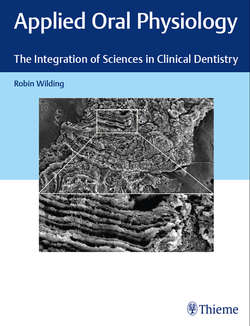Читать книгу Applied Oral Physiology - Robin Wilding - Страница 38
На сайте Литреса книга снята с продажи.
3.2 Function of Oral Mucosa
ОглавлениеThe oral mucosa has a protective, secretory, and sensory function.
The protective function is served by its resistance to tearing and compression, which is provided by the tough and yet resilient lamina propria. The oral mucosa is also mostly impervious to the penetration of bacterial toxins. Protection from microorganisms is also afforded by the shedding (desquamation) of the surface layer of cells. Bacterial colonies attached to these surface cells are thus regularly carried away when the surface cells are sloughed off. The cells are themselves flushed away in the saliva and swallowed.
Minor salivary glands in the submucosa secrete via ducts passing through the mucosa. These secretions help to keep the mucosa moist and free of excessive accumulations of bacteria. The secretions of minor salivary glands contain the same antibacterial elements as those from the major salivary gland and contribute to the control of bacterial growth on the oral mucosal surfaces. There are also sebaceous glands sometimes seen on the inside of the cheek (also called Fordyce’s granules). They have no function but are important to recognize as being normal.
Fig. 3.1 A diagrammatic representation of the components of oral mucosa. (a) The lining mucosa has a relatively thick epithelium which is not keratinized (E), supported by thin lamina propria (LP). The submucosa (Sm) contains blood vessels and minor salivary glands, in a loose connective tissue. The submucosa may be attached to muscle (M) or the periosteum (Po) covering bone. (b) Masticatory mucosa has a keratinized epithelium (K) and a dense lamina propria of collagen fibers, which attach the epithelium directly to the periosteum covering bone (B).
Fig. 3.2 A scanning electron microscope (SEM) image of the surface epithelial cells from oral mucosa (magnification × 2,000). (a) The surface membrane of each cell has invaginations. (b) These interlock with projections in the adjacent cell. (c) Nonkeratinized epithelium has microplications, and each cell is less firmly attached to its neighbor than keratinized cells.
The mucosa provides a suitable site for sensory nerve endings, such as those associated with pain, touch, temperature, and the taste receptors of the tongue and palate. Some of these receptors are important in the initiation of reflexes like swallowing or jaw opening.
